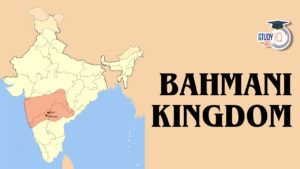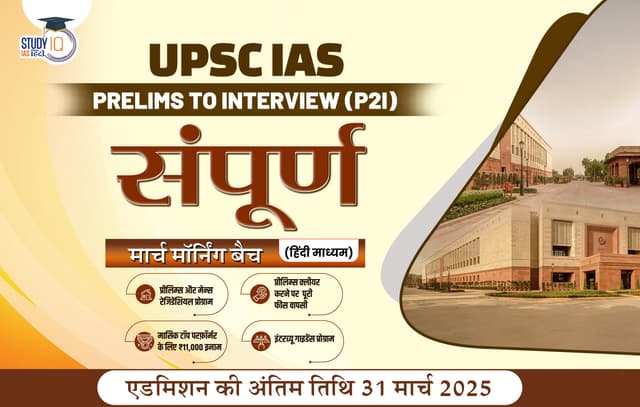Table of Contents
Maharaja Ranjit Singh
| Description | Fact |
| Birth | 13 November 1780, Gujranwala, Punjab (now in Pakistan) |
| Parents | Maha Singh and Raj Kaur |
| Mother-in-Law | Sada Kaur |
| Clan | Sandhawalia |
| Misl | Sukerchakia (became chief in 1792) |
| Title of Maharaja | 1801 |
| Treaties | Treaty of Amritsar (1809, with Metcalfe) |
| Gold Donations | Golden Temple, Kashi Vishwanath Temple, and intended for Jagannath Temple |
| European Officers | Ventura, Court, and Allard |
| Military Divisions | Fauj-i-Aam, Fauj-i-Khas, Fauj-i-be-Qawaid |
| Death | 27 June 1839 |
Birth and Early Life
Ranjit Singh was born in Gujranwala on 13th November 1780 to Maha Singh and Raj Kaur. His mother, Raj Kaur, was the daughter of Raja Gajpat Singh from the Malwa region of Punjab, earning her the name Mai Malwain. Ranjit Singh was famously known as Sher-i-Punjab (Lion of Punjab) for being the first Indian to drive the traditional conquerors of India, the Pashtuns (Afghans), back to their homeland.
Ancestral History
Ranjit Singh’s lineage traces back to his great-great-grandfather, Budh Singh, who is believed to have been baptized by Guru Gobind Singh himself. Budh Singh left a few villages for his descendants. His son, Naudh Singh, received additional land from Nawab Kapur Singh and named his village Sukerchak (meaning Thanksgiving), fortifying it for protection. Naudh Singh was killed in a skirmish in 1752.
His eldest son, Charhat Singh, founded the Sukerchakia Misl, expanding its territories and fortifying Gujranwala. However, when Ahmad Shah Abdali invaded, Charhat Singh fled to the jungles while Abdali plundered his estate. Charhat Singh later avenged this by attacking the Afghan baggage train but died due to wounds from an exploding firearm.
His son, Maha Singh, inherited his father’s daring and ambition. He built Garhi Maha Singh, a fort within Gujranwala, and expanded his horsemen to 6,000. To strengthen alliances, he arranged the marriage of his son, Ranjit Singh, to Mehtab Kaur, granddaughter of the Kanhaiya chief, Sada Kaur.
Maha Singh died in 1792, leaving the leadership of the Sukerchakia Misl to the young Ranjit Singh, who inherited a strong army and great ambition.
Childhood
At birth, Ranjit Singh was named Budh Singh, meaning “The Wise One.” However, after his father’s victory in a battle, he was renamed Ranjit Singh (Victor of Battles). Despite being unlettered, he proved to be an exceptional military leader.
His childhood was filled with hunting, swordplay, and a deep passion for horses. However, he suffered from smallpox, which left him blind in his left eye and scarred his face and body.
Early Expeditions
At the age of 10, Ranjit Singh began accompanying his father on military campaigns. After Maha Singh’s death, his mother, Raj Kaur, took charge of the Sukerchakia Misl, but real power lay with Diwan Lakhpat Rai.
In 1796, Ranjit Singh married Mehtab Kaur, and his mother-in-law, Sada Kaur, began influencing the administration. However, in 1797, he ended the triarchy of Raj Kaur, Sada Kaur, and Diwan Lakhpat Rai, taking full control of his Misl. Dal Singh was appointed as his Prime Minister, and he crowned Ranjit Singh as Sardar.
Conquest of Lahore (1799)
In 1793, Zaman Shah Durrani (grandson of Ahmad Shah Abdali) became the ruler of Kabul and attempted to recapture Punjab. However, due to internal rebellion, he failed to maintain control over Lahore, which was seized by Bhangi Misl chiefs—Chet Singh, Sahib Singh, and Mohar Singh. Their cruel rule led the citizens of Lahore, particularly the Muslim Chaudharis, to seek Ranjit Singh’s help.
Ranjit Singh attacked Lahore in July 1799. Sahib Singh and Mohar Singh fled, leaving Chet Singh to defend the city. Despite some resistance, Ranjit Singh emerged victorious, marking his first major conquest.
Proclamation as Maharaja (1801)
In 1801, Ranjit Singh declared himself Maharaja of Punjab in Lahore. He ordered his soldiers to respect all citizens and even issued coins in the name of the Sikh Gurus instead of himself, calling them Nanak Shahi.
A coalition of Misldars formed under Gulab Singh (Bhangi Chief) to challenge him. A battle was planned at Bhasin (Lahore District), but Gulab Singh died due to excessive drinking, leading to the collapse of opposition forces. With this, the Bhangi Misl, the strongest Misl, became powerless, solidifying Ranjit Singh’s authority.
Expansion and Conquests
Ranjit Singh continued his conquests by annexing Sukerchakia, Kanhaiya, Ahluwalia, Ramgarhia, and Phulkian Misls. He strategically subdued minor Sikh and Pashtun chieftains, capturing Akalgarh and Gujrat (Pakistan) before advancing towards Amritsar.
Conquest of Amritsar (1805)
Amritsar, held by Mai Sukhan (widow of Gulab Singh) and her minor son Gurdit Singh, refused to surrender to Ranjit Singh. He besieged Lohgarh Fort and, after a few days, conquered Amritsar—securing both the political capital (Lahore) and religious capital (Amritsar) of Punjab.
Conquest of Misls
- Dallewalia Misl (1807)
- Karor Singhia Misl (1810)
- Faizalpuria Misl (1811)
Ranjit Singh aimed to unite the Sikh nation. He exploited internal disputes within Patiala (Phulkian Misl) and mediated between Sahib Singh and Rani Aas Kaur, earning rewards and recognition.
Treaty of Amritsar (1809)
Ranjit Singh’s growing influence alarmed the British, who sent Charles Metcalfe to negotiate. In April 1809, Ranjit Singh was forced to sign the Treaty of Amritsar, confining his territorial expansion northwest of the Sutlej River.
Conquest of Kangra (1809)
Ranjit Singh turned to Kangra, ruled by Raja Sansar Chand Katoch, who sought his help against Gorkha invaders. In exchange for assistance, Ranjit Singh demanded the Kangra Fort. Initially reluctant, Sansar Chand eventually accepted Ranjit’s terms. With his forces, Ranjit Singh defeated the Gorkhas and secured Kangra in 1809.
Later Conquests of Ranjit Singh
Conquest of Multan
Multan was handed over to Muzzaffar Khan by Taimur Shah in 1799. It was strategically and economically significant, serving as a major trading center for caravans traveling from Central Asia through the Bolan Pass to Delhi. Ranjit Singh attempted to capture Multan multiple times, starting in 1813, but was initially unable to breach its massive fort. He managed to take control of the outlying bazaars, collecting tributes, but this did not satisfy his ambition.
An opportunity arose when the Afghans were preoccupied with the Persians on their western front. Seizing the moment, Ranjit Singh finally conquered Multan in February 1818.
Conquest of Kashmir
Kashmir was controlled by Ata Mohammad Khan. Both Ranjit Singh and Fateh Khan (Prime Minister of Kabul) aspired to conquer it but hesitated to attack alone. Eventually, they formed an alliance and captured Kashmir in 1813.
Ranjit Singh had an additional motive: rescuing Shah Shuja, the former king of Afghanistan (1803) and brother of Zaman Shah, who was imprisoned by Ata Khan. Shah Shuja’s wife, Wafa Begum, promised Ranjit Singh the Kohinoor diamond in exchange for her husband’s release. Although Fateh Khan betrayed Ranjit by keeping Kashmir for himself, Ranjit successfully rescued Shah Shuja and obtained the Kohinoor.
Fateh Khan installed his brother, Azim Khan, as the new Governor of Kashmir. Meanwhile, Ranjit Singh diplomatically secured control over Attock in the same year. However, his attempt to reclaim Kashmir in 1814 failed due to internal issues, and Azim Khan inflicted heavy losses on his forces. After this setback, Ranjit postponed further efforts but ultimately expelled the Afghans from Kashmir. He finally conquered Kashmir in July 1819 and subsequently captured Dera Ghazi Khan and Dera Ismail Khan in 1820 and 1821, respectively.
Battle of Balakot (1831)
In 1827, Syed Ahmad Bareillvi, distressed by the decline of Muslim rule in Delhi and Lahore, incited local Muslims to revolt against Sikh rule. Claiming to be a messenger of Prophet Muhammad, he raised an army, gathered resources, and reached Peshawar. Declaring himself Caliph, he struck coins bearing the legend “Ahmad the Just, Defender of Faith.”
Ranjit Singh sent a large force to suppress him. In the Battle of Saidon (June 1830), Syed Ahmad was defeated but managed to escape. In 1831, a Sikh force led by Prince Sher Singh killed Syed Ahmad at Balakot.
Ranjit Singh captured Peshawar in 1834. In 1837, the Battle of Jamrud took place, where Hari Singh Nalwa, a prominent Sikh general, died fighting heroically.
Extent of Ranjit Singh’s Kingdom
After capturing Peshawar, his empire extended:
- Northwest: Sulaiman Range
- Southeast: Sutlej River
- North: Ladakh and Skardu Valley
- Southwest: Shikarpur
Anglo-Sikh Relations (1809-1839)
Ranjit Singh’s relations with the British were initially amicable. A treaty was signed in 1809, but Ranjit became suspicious of British intentions. To maintain good relations, the British sent gifts, attended royal events, and provided medical assistance.
Tensions arose in 1831 over Sindh, a strategically important region. Ranjit Singh attempted to invade Sindh, but the British prevented him, asserting their supremacy. In 1836, Ranjit Singh tried again but withdrew under British pressure, leading to further strain in relations.
Tripartite Treaty (1838)
Governor-General Lord Auckland, fearing Russian influence in Afghanistan, sought to install Shah Shuja as ruler. On June 26, 1838, the British, Ranjit Singh, and Shah Shuja signed the Tripartite Treaty. The terms included:
- Shah Shuja acknowledged Ranjit Singh’s control over his occupied territories.
- Ranjit Singh could not expand beyond Peshawar, which remained under Shah Shuja.
- Ranjit Singh had to allow British forces passage through his territory.
Ranjit Singh opposed these conditions, straining relations further. Before further developments, he passed away in June 1839.
Administration of Maharaja Ranjit Singh
Civil Administration
His kingdom was called ‘Sarkar Khalsa,’ and his court was ‘Darbar Khalsa.’ He was assisted by various ministers:
- Prime Minister: Raja Dhian Singh
- Foreign Minister: Faqir Aziz-ud-Din
- Defense Minister: Mokham Chand
- Finance Minister: Bhiwani Das
His administration had twelve departments, with the most important being:
- Daftar-e-Abwab-al-Mal: Revenue collection records
- Daftar-e-Taujihat: Expenditure accounts
- Daftar-e-Mawajah: Salary records for army and civil servants
- Daftar-e-Roznameba Kharach: Daily royal expenses
- Daftar-e-Sairat: Customs revenue, mainly on salt
Provincial Administration
Ranjit Singh’s kingdom was divided into four provinces:
- Lahore
- Multan
- Kashmir
- Peshawar
Each province was led by a Nazim (governor), appointed based on trustworthiness. Provinces were divided into parganas (districts), further divided into taluks and mauzas (villages).
Military Administration
Ranjit Singh’s greatest achievement was his strong army. Before his rule, Sikh forces were undisciplined and poorly trained. He modernized his army with the help of European officers like Ventura, Court, and Allard, inspired by Napoleonic tactics. His army was divided into:
- Fauj-i-Aam (Regular Army): Infantry, cavalry, and artillery
- Fauj-i-Khas (French Legion): A highly trained brigade raised in 1822
- Fauj-i-be-Qawaid (Irregular Army): Primarily composed of horsemen
Religious Policy
Ranjit Singh’s state was secular. He did not discriminate in government appointments:
- Foreign Minister: Faqir Aziz-ud-Din (Muslim)
- Army Officer: Mohkam Chand (Hindu)
He donated gold to various religious sites, including:
- Harmandir Sahib (Golden Temple, Amritsar)
- Kashi Vishwanath Temple (Indore)
- Planned to donate the Kohinoor diamond to Jagannath Temple (Puri)
| Punjab PCS Important Links | ||
| Punjab PCS Notification | Punjab PCS Apply Online | Punjab PCS Syllabus |
| PPSC Eligibility Criteria | PPSC PYQ | Punjab PCS Notes |


 Bahmani Kingdom (1347-1527 AD), History,...
Bahmani Kingdom (1347-1527 AD), History,...
 Jallianwala Bagh Massacre, Date, History...
Jallianwala Bagh Massacre, Date, History...
 Buddhism History, Origin, Sect, Councils...
Buddhism History, Origin, Sect, Councils...













